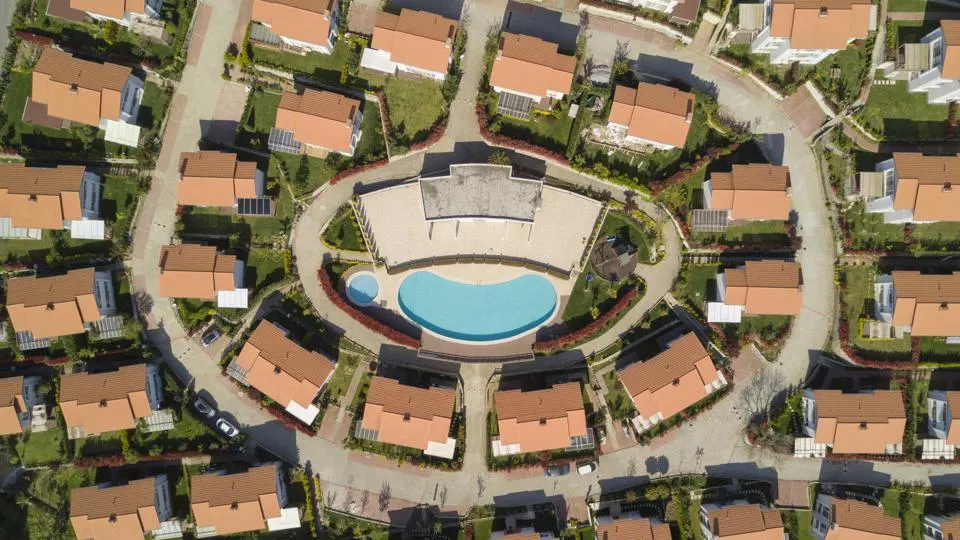What Is A Planned Unit Development (PUD)?

With increasing talks of introducing a planned unit development, or PUD, to the serene stretches of Friendly Avenue, our community should pause and consider the implications. A PUD typically comprises single-family homes, occasionally accompanied by condos or townhomes, all overseen by a homeowners association (HOA). For prospective homeowners and existing residents alike, understanding the nuances of a PUD is crucial. Beyond potential challenges during the mortgage qualification process, living under a PUD structure can significantly reshape the character and dynamics of our neighborhood. We should approach this prospect with careful thought, weighing whether such a change aligns with the long-standing values and charm of Friendly Avenue.
Characteristics of PUDs
As real estate developers craft planned unit developments (PUDs), they aim for cohesion and allure. While a PUD can offer an eclectic blend of housing options to cater to varied budgets and provide the convenience of proximity to workplaces, shopping hubs, educational centers, and recreational spaces, there’s more to consider. It’s not unusual to see townhomes, single-family residences, and senior living facilities nestled together in a PUD, neighbored by grocery outlets, eateries, daycares, and office complexes. Some even incorporate religious establishments and light industrial structures like warehouses. Yet, as we reflect on introducing such a multi-faceted environment to our community, we must ask ourselves if this complex tapestry aligns with the essence and ethos of our neighborhood.
Identifying PUDs in Real Estate Listings
One method to discern if a home for sale is within a planned unit development is when it appears as a single-family home or townhouse, yet the listing categorizes it as a ‘condo,’ as per the real estate platform, Redfin. Another indicator of a PUD property is the presence of HOA fees. Nonetheless, it’s crucial to note that while a house might incur HOA fees, it doesn’t necessarily mean it’s within a PUD.
Planned Unit Developments and Homeowners Associations
As far as lenders are concerned, these are the defining characteristics of a PUD:
- The unit owners (homeowners) own both their residence (the structure) and their lot (the land).
- An HOA owns and maintains common amenities that all unit owners may use.
- The homeowners’ membership in the HOA is mandatory.
- The homeowner must pay dues and assessments levied by the association to maintain the common amenities.
Amenities shared by the entire community include facilities like swimming pools, tennis courts, parks, playgrounds, landscaping, and security measures. These exclusive features are reserved solely for the community’s residents and their personal guests.
Given that PUDs offer shared amenities, owning property within one might carry a higher cost. As an owner, you’d be responsible for regular homeowners association dues, be it monthly, quarterly, or annually. These dues can influence your home’s affordability. It’s worth considering if you’ll utilize these amenities frequently enough to justify the additional cost, or if the appeal of the community itself warrants the extra expenditure.
In addition to paying regular HOA fees for amenities, you will have to follow the rules about how you can use and modify your property. You may be restricted from:
- Using your home as a short-term rental.
- it—unless the HOA approves the color scheme.
- Parking cars overnight on the street.
- Putting up political signs in your yard.
Any HOA can have rules like these, though, not just one located in a PUD.
PUD Finances and Rules
There’s a hint of complexity when securing a mortgage for a home within a PUD. While it’s generally not much harder than for a non-PUD home, the solidity of the HOA is vital. Lenders will scrutinize the HOA’s finances and the PUD’s covenants, conditions, and restrictions (CC&Rs). It’s also crucial for you to be familiar with these details. To ensure you fully comprehend the rules and gauge the financial robustness and efficiency of the homeowners’ association, consider consulting a real estate attorney.
Important things to know about an HOA’s finances include:
- How much it has in reserves to pay for major repairs or maintenance
- What percentage of homeowners are delinquent on their monthly dues
- Whether the HOA is involved in any litigation
It’s deeply concerning to realize that, upon delving into the paperwork, potential issues may arise regarding the operation of the community. Recognizing these red flags early on can spare you immense future hassle. Remember, once you commit to a PUD’s HOA, there’s no opting out. Your only escape from the obligations and potential conflicts of an HOA is selling your property. Tread cautiously.
